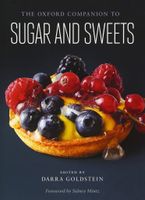Advertisement
Cookies and Small Sweets
Published 2015
Many of the cookies and small sweets popular today in Italy date back to medieval and Renaissance times, like southern Italy’s mustazzoli, originally made with reduced grape must but now more commonly made with just honey. See grape must. In the Middle Ages, strong, “warm” spices like black pepper, nutmeg, and cinnamon were frequently used in sweets such as pepatelli, black pepper honey biscotti. See biscotti. The Tuscan specialty of panforte, or “strong bread,” is made with spices, candied and dried fruits, almonds, and honey. Coated with a thin, white, edible wafer and topped with confectioner’s sugar, it is especially popular during the Christmas holidays; a similar Christmas sweet is panpepato (pepper bread), a specialty of Umbria. Also seasonally enjoyed are cavallucci (little horses), soft cookies made with honey, nuts, and anise. A Sienese sweet created in the Middle Ages, their name likely derives from the fact that they were offered to travelers who stabled their horses at local inns.


